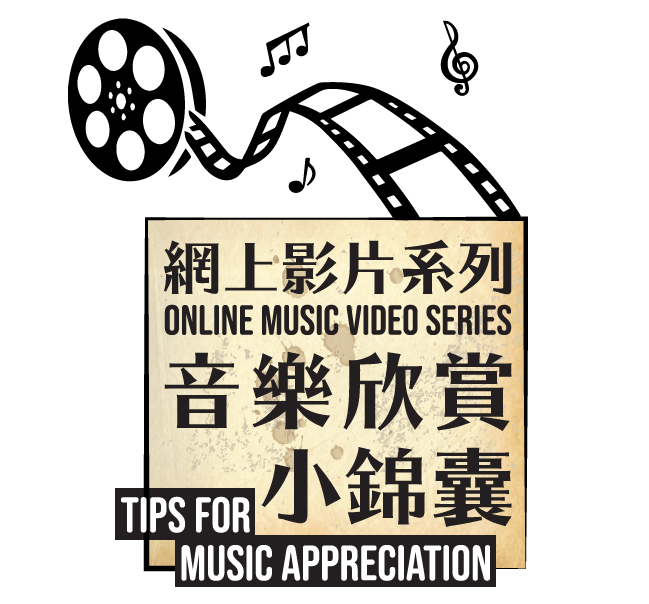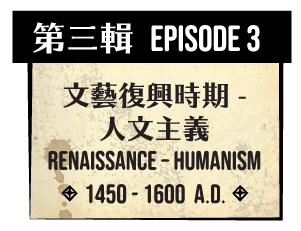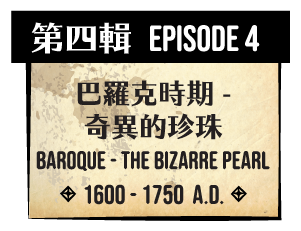
音樂欣賞小錦囊
Tips For Music Appreciation
欣賞音樂有很多不同的方法,其中一種饒有趣味的便是把樂曲和同時期的藝術,例如繪畫、建築或文學等作比較。這方法既能將這種極為抽象的藝術實體化,讓我們除聽得見外,也可以看得到和觸摸得到,從而能更深入了解作品內藏的深意。
一連四輯,每輯十五分鐘的《音樂欣賞小錦囊》將為大家介紹西洋古典音樂自「中世紀」至「巴羅克時期」的風格變化;如上所說,我們會把同一時期內不同的藝術範疇為各位作出比較,希望能令大家對這一千年間的音樂和藝術變化有一個初步的認識。
There are different ways to listen to and appreciate music. One of those is by comparing different genres of arts, e.g. painting, architecture and literature, within the same period, in order to materialize this most abstract form of arts. Besides hearing, this allows us to see, and even touch the compositions and eventually learn about the underlying meaning.
The four 15-minute episodes of “Tips for Music Appreciation” will introduce the major stylistic changes from Medieval to Baroque period. As stated above, we will compare different forms of arts within each period, hoping that the audience will get a glimpse of the main features of music and arts in the past millennium.


李國麒畢業於香港中文大學音樂系。後赴笈美國,在西北大學修讀碩士課程。過去二十多年間,李氏曾為香港管弦樂團、音樂事務處、香港藝術圖書館、歷史博物館、康樂文化署及本地各大專院校及中、小學主持音樂欣賞講座,亦曾為香港電台第四台主持音樂欣賞節目。李氏輕鬆幽默的風格堪稱一絕,廣受聽眾的歡迎和愛戴。
除在報章和音響雜誌刊登文章外,李氏亦經常為康樂文化署和香港管弦樂團撰寫音樂會場刊,並曾與香港管弦樂團合作出版「浪漫之後」音樂欣賞小冊和鐳射唱片;此外,亦曾為寶麗金唱片公司編撰「WHY」、「WHY KLAVIER」及「PASSPORT TO MUSIC」等極為暢銷的鐳射唱片,對古典音樂的普及和推廣可謂不遺餘力。
Lee Kwok Ki Joseph graduated in CUHK and later pursued his studies at Northwestern University in the US. In the past decades, Joseph has given numerous talks for the Hong Kong Philharmonic Orchestra, Hong Kong Music Office, Hong Kong Arts Library, Hong Kong Museum of History and many local institutes and schools. In addition, Joseph has also produced and conducted radio programmes on music appreciation for RTHK Radio 4, compiled classical CDs and wrote listening guides for bestselling classical compilation titles, including “Why”, “Why Klavier” and “Passport to Music”.

網上影片 Online Videos
影片將會每星期陸續上載
Videos will be uploaded every week

第一輯 中世紀 (450-1000) — 黑暗時期
西洋古典音樂源自羅馬帝國滅亡後的「中世紀時期」。由於受到野蠻民族的入侵,歐洲的文化中心從意大利轉移到東羅馬帝國的首都君士坦丁堡。遺留在歐洲心臟地帶的只剩下到處頹垣敗瓦,暴力事件無日無之,人民的性命和財產都處於朝不保夕的狀態。當時有能力保存文化,甚或是文字的地方只剩下教會和裡面的一群修士,自然而然「黑暗時期」的藝術便是環繞著這個宗教圈子而產生。
今天,當我們在歐洲各地遇到當時的教會建築,在昏暗的空間裡細看閃爍著光芒的壁畫時,如能聽到修士們進行崇拜時頌唱的「聖歌」,那種感覺實在不能以筆墨來形容。
Episode 1 Medieval (450-1000) – The Dark Ages
Historians generally agree that western music originated during the Medieval period, after the fall of the Roman Empire. As Rome was invaded by the barbarians in its last years, this once cultural center of Europe was moved to Constantinople, the capital of the East Roman Empire. What left behind in Rome were only ruins and violence, where the residents couldn’t protect their properties, and even their own lives.
Today, when we visit those Medieval churches, while watching the frescos under the dim light shimmered through the small windows, we might still be blessed with the rare experience of hearing the chanting of the friars.

第二輯 中世紀 (1000-1450) — 晨曦初現
耶穌並沒有像預言般在他死後第一個千禧年回到人間作「 末日審判」,對大部分人來說,這確實是一個值得舉世歡騰的日子。那就讓我們到處建築高聳入雲的宏偉教堂,來表達我們的感恩吧!教堂,走到那裡都是教堂!齊來把厚實、內部昏暗的「羅馬樣式」逐漸變成更高、能採納更多光線的「歌德樣式」教堂;也要運用透視法的規條令高牆上的濕壁畫創作得更真實。
至於音樂呢?當然要擺脫那些數百年來一成不變的單旋律「聖歌」,進入「複音音樂」的年代吧!不要忘記,還有世俗音樂的萌芽;儘管那些由遊吟詩人創作的情歌和舞曲大都無法筆錄下來,確實非常可惜,但人類除了宗教信仰外,也總算多了另一些慰藉。
Episode 2 Medieval (1000-1450) – Let there be light
Jesus didn’t come back at the end of the first millennium for the prophesized “Judgement Day”. Well, this was certainly good news for most people and really worth celebrating. How? The answer was to build tall magnificent churches. As a result, everywhere there were churches. Eventually, those massive and dim Romanesque style evolved into the tall and lightened Gothic style. The lately invented ideas of perspective were also adopted in the creation of frescoes on the huge walls?
As for music, of course we also need to leave behind those hundreds of years old monophonic chants, and entered into the new world of polyphony. Well, don’t forget we also have the secular love songs and dances by the troubadours. Though seldom written down, they at least give us another choice other than their sacred counterparts.

第三輯 文藝復興時期 (1450-1600) —人文主義
歐洲在中世紀經歷了多次十字軍和黑死病後,勞動人口大量減少,到處出現「有田無人耕」的情況。因應大量需求,農民逐漸獲得一定程度的話語權,商人階層更發展到能左右城市施政;意大利的佛羅倫斯便是最佳的例子。在麥第奇家族數代經營下,這城市成為「文藝復興」的搖籃。這個富商家族傾盡全力支持各類藝術的發展,務求復興古希臘羅馬時代的偉大輝煌文化,他們的努力更間接令到佛羅倫斯成為歐洲其它城市的典範。我們耳熟能詳的達文西、米高安哲羅、拉斐爾等傳奇人物也都來自這個世代。究竟這時期的音樂、繪畫和建築有著怎麼樣的特色,當中又有多少「世俗」和「人性」的成分呢?
Episode 3 Renaissance (1450-1600) – Humanism
After the Crusades and Black Death plagues, Europe saw a huge loss in manpower. Peasants now gained a higher negotiation power with the landlords as there were fields not cultivated everywhere. Gradually the merchants even collected so much power that they could rule the cities. Florence was a good example of such a phenomenon. Under the reign of the Medici family, Florence became the cradle of Renaissance. This wealthy family supported all kinds of arts to realize the glory of ancient Greece and Rome. Under their influences, Florence became the ideal example of all other cities throughout Europe. Actually, the familiar names of Da Vinci, Michelangelo and Raphael, etc. all came from this era. So, what are the characteristics of Renaissance paintings, architectures and music? How important are the roles of “secular” and “humanity” among those?

第四輯 巴羅克時期 (1600-1750) — 奇異的珍珠
在經歷處處以發現新大陸、發掘新事物及發揚人類偉大智慧的大時代後,世人終於重投教會的懷抱。和早前不同的是,西方世界已有足夠的財富和知識,把宗教重新包裝得美倫美奐,金碧輝煌。龐大畫作裡的宗教人物充滿誇張肌肉的「健美先生」,再加上強烈的光暗對比,彷彿一切都在影樓安排好的場景裡創作,矯揉做作卻又不失感性和吸引力。這時,音樂界更出現我們熟悉的巴赫、韓德爾和韋華弟等名字,這可真是一個美好的年代啊!
Episode 4 Baroque (1600-1750) — The bizarre pearl
After a whole era of great discovery, brilliant invention and huge leap in human intelligence, men once again rejoined and embraced religion. The difference was, now we had enough wealth and wisdom to decorate religion in a spectacular package. The religious figures in those huge sacred paintings became muscular Mr. Bodybuilder. Together with the strong contrast of light and dark, it seems that everything was so artificial and compiled in a photo studio, yet attractive and provoking. Added to the great names of Bach, Handel and Vivaldi, what a wonderful world!

主辦單位:香港科技大學 教育創新中心、藝術中心 及 匠心薈
Co-organized : The HKUST Center of Education Innovation, Center for Arts and L'Artiste